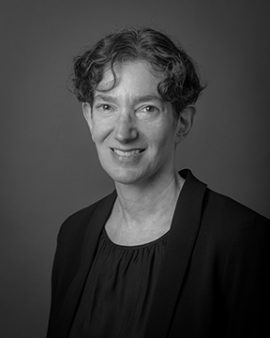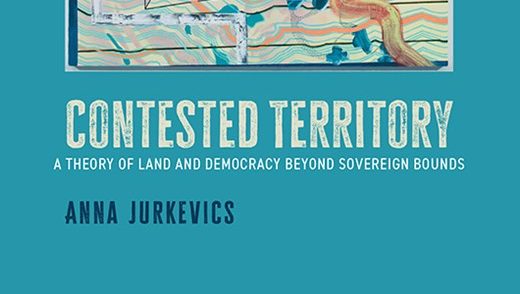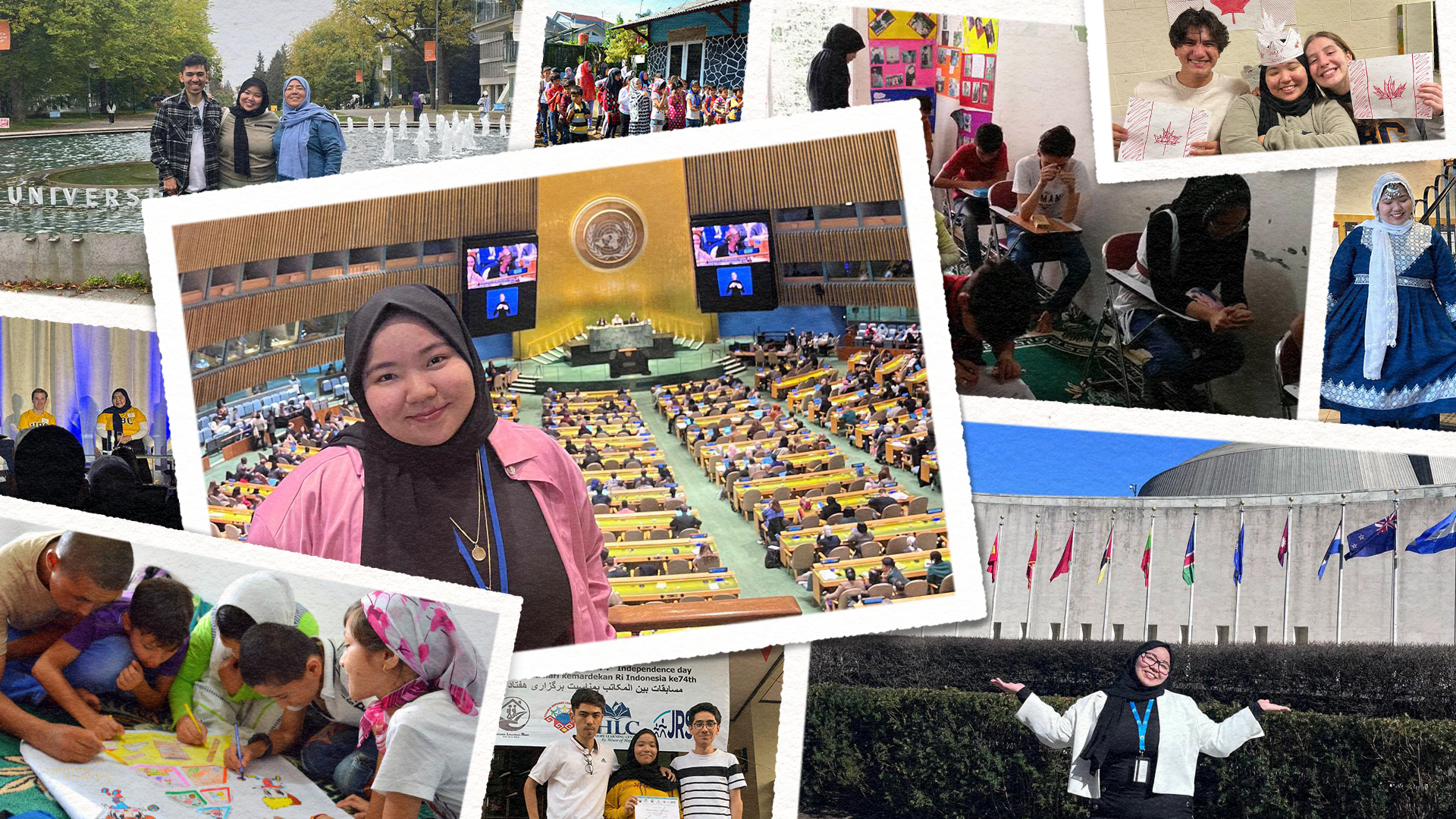We spoke with Associate Professor Lisa Sundstrom about her new co-authored book, Courting Gender Justice: Russia, Turkey, and the European Court of Human Rights.
The Book:
Courting Gender Justice: Russia, Turkey, and the European Court of Human Rights
Lisa McIntosh Sundstrom, Valerie Sperling, and Melike Sayoglu
Oxford University Press
Women and the LGBT community in Russia and Turkey face pervasive discrimination. Only a small percentage dare to challenge their mistreatment in court. Facing domestic police and judges who often refuse to recognize discrimination, a small minority of activists have exhausted their domestic appeals and then turned to their last hope: the European Court of Human Rights (ECtHR). The ECtHR, located in Strasbourg, France, is widely regarded as the most effective international human rights court in existence. Russian citizens whose rights have been violated at home have brought tens of thousands of cases to the ECtHR over the past two decades. But only one of these cases resulted in a finding of gender discrimination by the ECtHR-and that case was brought by a man. By comparison, the Court has found gender discrimination more frequently in decisions on Turkish cases. Courting Gender Justice explores the obstacles that confront citizens, activists, and lawyers who try to bring gender discrimination cases to court. To shed light on the factors that make rare victories possible in discrimination cases, the book draws comparisons among forms of discrimination faced by women and LGBT people in Russia and Turkey. Based on interviews with human rights and feminist activists and lawyers in Russia and Turkey, this engaging book grounds the law in the personal experiences of individual people fighting to defend their rights.
How did you become interested in this topic?
Valerie Sperling and I have both studied Russian politics for over two decades. We had each independently pursued individual research projects in the past that were focused on women’s rights activism in Russia, and Russian cases at the European Court of Human Rights. In a conversation at a conference several years ago, we realized that we were both puzzled by the fact that, while there is an enormous amount of obvious gender-based discrimination that occurs in Russia, and Russia at the time was the most frequent country of origin for cases sent by applicants to the European Court of Human Rights, with thousands of applications being sent by Russians each year, we weren’t aware of any case applications or decisions from that Court regarding Russia that had to do with gender discrimination claims. We wondered what might be causing this mismatch between violations of women’s rights and the apparent dearth of litigation in response to them, and decided to launch a project to research the question!
What is the overarching argument of your book?
In the book, we point out that women and the LGBT community in Russia and Turkey face pervasive discrimination. Yet only a small percentage of people experiencing gender discrimination dare to challenge their mistreatment in court. Facing domestic police and judges who often refuse to recognize discrimination – especially discrimination in the form of violence against women — a tiny minority of activists have exhausted their domestic appeals and then turned to their last hope: the European Court of Human Rights (ECtHR), in Strasbourg, France. The ECtHR is widely regarded as the most effective international human rights court in the world, and Russian citizens have made very good use of it, bringing tens of thousands of cases to the ECtHR in the last 20 years. But the odd part is that only one of those cases resulted in a finding of gender discrimination – and that case was brought by a man. By comparison, we found that the Court has found gender discrimination more frequently in decisions on Turkish cases. So we wanted to figure out what the obstacles were that confront people who try to use domestic and international law to fight gender and sexual orientation discrimination in Russia and Turkey, and the argument we make is about the factors that make legal victories possible on cases of this kind of discrimination – whether in courts at home or abroad. We argue that while there are various psychological and social barriers to women victims of discrimination pursuing legal remedies – barriers that are common around the world — the Russian legal system has certain features that discourage women from taking cases to court in the first place, such as the fact that most cases of non-life threatening assault are relegated to a “private prosecution” procedure, where the victim must conduct the investigation herself rather than being assisted by a state prosecutor. Also, we found that the potential roles of feminist activists in pursuing litigation are dampened by a lack of connection between human rights and women’s rights communities in Russia, which leads to very few feminist lawyers being trained in how to take cases to the ECtHR. We based our findings on interviews with human rights and feminist activists and lawyers in Russia and Turkey, so our argument is very much grounded in the experiences of individual people fighting to defend their rights.
What are the core lessons you are hoping readers will take away from your book?
Our comparisons between Turkey and Russia and between LGBT and gender discrimination cases led us to sketch out a few key factors that we came to think of as the “magic formula” for successful cases claiming gender discrimination at the European Court of Human Rights. First, this might sound obvious, but in order to mount a successful case, you need lawyers who are trained in gender discrimination law – and these are few and far between in Russia. We found about a half dozen of them – very dedicated men and women – but having so few makes it hard for women who might have experienced discrimination – and those lawyers – to find each other. The lack of lawyers trained in taking gender discrimination cases to the ECtHR is mostly a consequence of the separation between human rights and women’s rights civil society networks. That wasn’t a problem in Turkey, where women’s rights concerns were more integrated into the notion of human rights, and where women’s rights lawyers got training on taking cases to international courts in a variety of ways not tied to the human rights groups – unlike the situation in Russia.
The second factor might also sound obvious, and it’s that activism requires activists. Discrimination cases are often a matter of what’s called “strategic litigation.” Activists choose a particularly paradigmatic case that they know they are going to lose in domestic court, so they take the case first through domestic court in order to qualify as “exhausting their domestic remedies” as required by the ECtHR, and then after that, they take the case to the ECtHR. But it can take years, even just to get through the process of losing in domestic court. So it really takes an activist personality for a victim of discrimination to persevere in the legal system, knowing that they are not even going to win any significant personal remedy for the harm done to them, and certainly not quickly.
Third, we found that in order for a case at the European Court of Human Rights to prove that discrimination against women had occurred, it was crucial to bring evidence showing a pervasive, systematic pattern of discrimination that went beyond that individual case. In order to meet the Court’s very high evidentiary bar for proving discrimination, activists need to be able to collect data and show a pattern of discrimination in their country. When it comes to gender discrimination data, so far Turkish women’s groups have been more successful in that regard than Russian women’s groups.
Finally, as a result of this need to show evidence, we found that it is much easier for the ECtHR to recognize law-based discrimination than discrimination that takes the form of patterns of informal behavioural violence against individuals with certain identity characteristics. In other words, it’s easier to make a claim when it’s directly written into law that women are barred from certain professions, or that men aren’t allowed to take parental leave, or if gay activists aren’t allowed to hold a public event.
At a more general level, we concluded that gender discrimination is most likely to be identified and addressed when human rights institutions and feminist institutions work together. When the ECtHR’s judges refer in their case decisions to international women’s rights conventions like the Convention on the Elimination of All Forms of Discrimination Against Women (CEDAW) and the Council of Europe’s Istanbul Convention on preventing and combating violence against women and domestic violence, they are acknowledging that women’s rights are human rights. And similarly, we think that the way forward on the ground in Russia and Turkey is likely going to be for human rights groups and women’s groups to work together to blend their expertise and bring cases forward to try to stop gender discrimination.
What new avenues of research do you see your book opening up?
For me personally, this issue of asymmetrical training of lawyers from human rights organizations versus women’s rights organizations opened up the question of explaining why that was. We found that Western donor agencies that provide assistance to Russian NGOs were the ones primarily funding training programs for lawyers on how to take cases to the European Court of Human Rights, so for me this has opened up a new line of research to track trends in donor funding, both geographically and by type of grant recipient organization over time, to see the extent to which donors might be driving NGOs’ choices of the kinds of human rights strategies they are using around the world. I’m currently working with a collaborator, Heidi Haddad from Pomona College in the US, on this question.
Valerie Sperling and I are also embarking on a new project with a number of research collaborators who work on different aspects of civil society across postcommunist Europe, to examine how forms of civil society activism have changed over time and vary from country to country, as well as to document patterns in popular views about civic participation and civil society through comparable public opinion surveys in several countries across the region. Last month, Valerie and I began our work on this by traveling to Moscow and St. Petersburg to interview feminist activists – both older feminists who have been active for decades and younger feminist activists who have only recently become active – to see how forms of activism and views about feminism have changed over time in Russia.
At a wider level, in terms of political science in general, I think that this book opens up big questions for both academic researchers and practitioners in international courts. Our book shows that international courts are not equally welcoming and open to all types of cases and all constituencies, so we have a great deal to learn about what the causes of the hot spots and gaps in litigation activity at the international level are. There is a growing interest in questions about the roles that activists play in international courts. In fact, I’ve just initiated a network of international scholars interested in these questions, on everything from what causes litigation to cluster in certain areas, to the impacts that activists have in improving domestic implementation of international courts’ judgments after they are handed down.
Do you have any advice for others hoping to coauthor a book?
I love co-authoring, because it helps to keep me on track and accountable in meeting deadlines, and I think I produce better work in co-authorship because of the iterative process of discussing and debating our ideas throughout every stage. I have been truly blessed with several very successful co-author relationships. I think Valerie and I would both agree that you need to find someone extremely reliable to partner with, and with whom you have a compatible “rhythm” of research process. You have to make sure you have a clear agreement on the anticipated research products and the timeline for producing them. People work at different paces and with different styles of developing their arguments. Some work very deductively and know what they want to write before they begin writing, while others write more inductively and organically over time. If you need to conduct actual field research together, you also have to like your co-author on a personal level enough to be able to spend a lot of time with them, probably living in the same accommodations and spending practically all day every day with them during the research process. Luckily, Valerie and I are very compatible with each other in all of these respects and had a lot of fun together while doing the arduous work of the project!


Valerie Sperling (PhD Berkeley) teaches a variety of courses in comparative politics, including Russian politics; revolution and political violence; mass murder and genocide under communism; transitions to democracy; globalization and democracy; and introduction to women’s studies. Her research interests include globalization and accountability, social movements, gender politics, patriotism and militarism, and state-building in the post-communist region.



